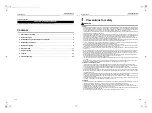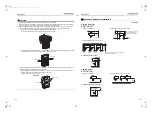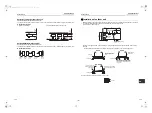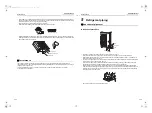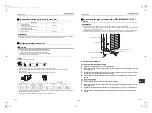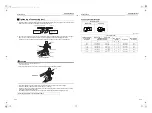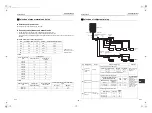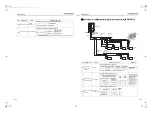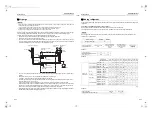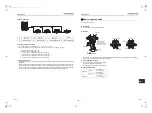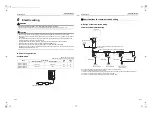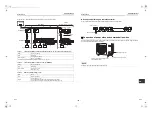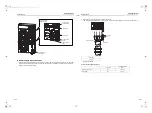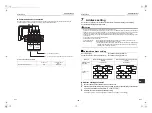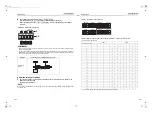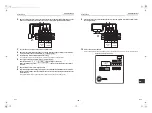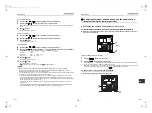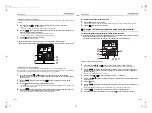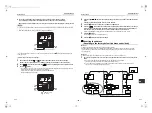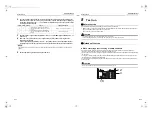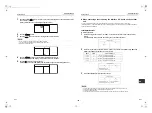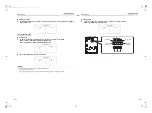
– 14 –
Outdoor Unit
Installation Manual
EN
Outdoor Unit
Installation Manual
Airtight test
Before starting an airtight test, further tighten the spindle valves on the gas side and liquid side.
Pressurize the pipe with nitrogen gas charged from the service port to the design pressure to conduct the airtight
test.
After the airtight test is completed, evacuate the nitrogen gas.
• Apply pressure from the service ports of the packed valves (or ball valves) at liquid side, discharge gas side and
suction gas side.
• An air tight test can be only performed to the service ports at liquid side, discharge gas side, and suction gas
side of the outdoor unit.
• Close fully valves at liquid side, discharge gas side, and suction gas side. As there is possibility that nitrogen gas
enters in the refrigerant cycle, re-tighten the valve rods before applying pressure.
(Re-tightening of the valve rods are unnecessary for valves at discharge gas side because they are ball valves.)
• For each refrigerant line, apply pressure gradually with steps at liquid side, discharge gas side, and suction gas
side.
Apply pressure to suction gas side, discharge gas side, and liquid side.
REQUIREMENT
Do not use “Oxygen”, “Flammable gas” and “Noxious gas” in an airtight test.
To detect a gross leakage
1. Apply pressure 0.3 MPa (3.0 kg / cm
2
G) for 3 minutes or more.
2. Apply pressure 1.5 MPa (15 kg / cm
2
G) for 3 minutes or more.
To detect a slow leakage
3. Apply pressure 3.73 MPa (38 kg / cm
2
G) for approx. 24 hours.
• Check pressure down.
No pressure down: Accepted
Pressure down: Check the leaked position.
NOTE
However, if the environmental temperature changes from the moment of applying pressure to 24 hours after that, the
pressure will change by about 0.01 MPa (0.1 kg / cm²G) per 1 °C. Consider the pressure change when checking the
test result.
Main pipe
Brazed
Fully closed
Ball valve fully closed
(gas side)
Outdoor unit
Service port
Service port
Packed valve fully closed
(liquid side)
Ø6.4
Copper pipe
Ø6.4
Copper pipe
Nitrogen gas
Reducing
valve
Gauge
manifold
High pressure
guage
Low pressure
guage
Connected to indoor unit
REQUIREMENT
When pressure decrease is detected in steps 1-3, check the leakage at the connecting points.
Check the leakage using a foaming agent or other measures and seal the leak with re-brazing, flare retightening or other
methods. After sealing, execute an airtight test again.
27-EN
28-EN
+00EH99883601_00Ta.book Page 14 Thursday, September 8, 2011 4:34 PM


